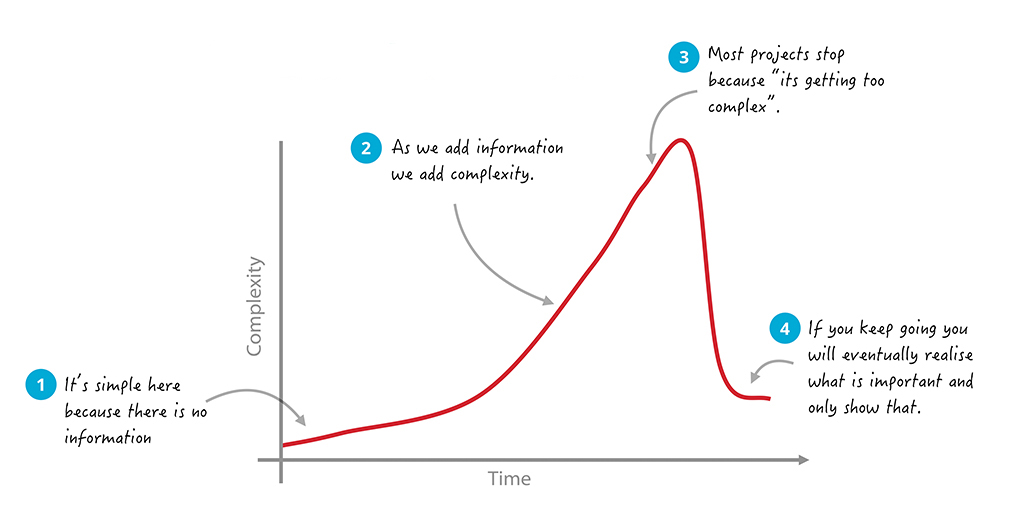It’s critical to design journeys that your customers can complete with ease and enjoyment – from clicking on a link or filling out a form, all the way to adopting better spending habits or losing weight. Designing successful experiences require an understanding of your customer’s habits, behaviours and desires and nudging them at each stage so they have the motivation to complete the process.
You’ll see customers take action when:
1. You’ve made it easy for them to complete the process.
2. They perceive value in completing the process.
Both of these factors need to be attended to. Here’s how:
Make it easier
Arriving at simplicity is a complex process. We cannot start with simplicity. Understanding how to find simplicity involves riding the complexity curve. Simplicity is not a lack of features; it’s understanding which features are the most important and then prioritizing those.

Riding the complexity curve
One way to arrive at simplicity is taking a mobile-first approach before we scale up. This forces us to design with minimal real estate, prompting the questions, “What are the most important items?” or “Do we really need that?”.
Increase the value
Consider every action you expect your customer to take as a form of payment. Before the customer takes action they need to perceive they are getting value for every payment. You, therefore, need to show the benefits up front in order to make explicit the perceived value.
The goal is to design the end-to-end experience to get the customer through the entire user journey, with the aim of losing as few customers as possible at each step. Approaches for increasing the perceived value include providing intrinsic and extrinsic rewards, gamification, and behavioural change techniques.
One tool we use to ensure that we’ve considered all the actions a customer needs to take is to map it out in a customer journey map.